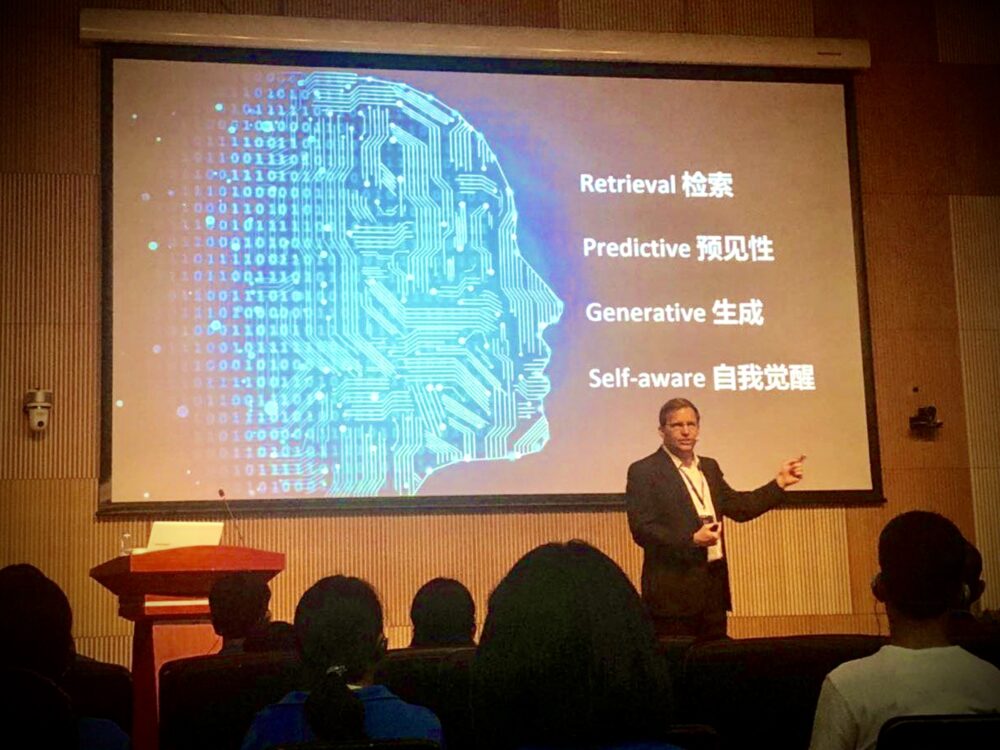In 2019 in Beijing, I delivered what I thought was a forward-thinking presentation on artificial intelligence (AI). My predictions on the disruptive potential of AI nearsightedly targeted bank tellers, insurance agents and truck drivers, but reassuringly dismissed the impact on content creators until decades later.
Cut to today, as AI disrupts virtually every industry - including creative fields previously thought untouchable. It’s understandable that artists and writers, the historical purveyors of human emotion and intuition, may be skeptical of a technology seemingly poised to eat their lunch.
However, forward-thinking creators need to view AI not as a threat, but as a tool that can enrich the artistic process. As a classically-trained artist and storyteller who has recently incorporated AI into my workflow, I’d like to share some firsthand insights on the technology’s benefits.
I believe that AI’s capacity for assistance and augmentation outweighs its potential for our replacement. Contrary to alarmist clarion calls, AI isn’t designed to consume creative roles, but to complement them. For writers, AI functions as a digital assistant, providing suggestions on grammar, tone, style and content. AI can be used to brainstorm, outline, expand, analyze and polish - much as one does with a writing partner.

This doesn’t diminish the voice or the originality of mindful storytellers. Rather, it facilitates more fruitful brainstorming, drafting and editing, with the human author as the creative driver and decision-maker in the story development process.
AI can furthermore inspire creative innovation and help overcome creative blocks, as noted by Neil Tennant of British pop band Pet Shop Boys, who is using the technology to complete unfinished songs. AI’s ability to process vast datasets exposes artists and writers to new ideas while generating unusual art or writing prompts based on patterns unseen by the human eye. In experienced hands, this infusion of unexpected inspiration can foster unique, boundary-pushing work that is a far cry from the mind-numbing, phone-thumbing crap most people currently associate with AI.
AI’s capability to simulate different narrative structures and artistic styles offers new creative sandboxes for writers and artists to play with. For visual artists, AI serves as a collaborative partner by suggesting content, composition, color and combinations. Those concerned about the ethics of “data scraping” can choose to feed AI platforms exclusively with their own creative input, as many of my colleagues and I do. The potential of any technology should not be judged or diminished based upon the lowest form of application. You can use a blade to murder someone or to perform a triple bypass.

Another beneficial aspect of AI is its potential for personal development. AI can analyze your creative work over time - highlighting trends, strengths and areas for improvement much as a career coach or mentor might. This objective analysis can guide your growth as an artist or writer - helping you understand your style and providing insights into your evolving creative voice.
Ultimately, artificial intelligence is a tool, and you’re free to determine how much influence it has over your creative process. While AI may offer suggestions or insights, the final decision always rests with you. Embracing this empowered perspective allows you to maintain your creative sovereignty while benefiting from AI’s capabilities.
And for those who have objections or misgivings about the fact that AI platforms are trained on the work of others, I offer this gentle reminder: so were you.

Skepticism towards AI among creatives is understandable given current media fear-mongering. But it’s more practical and beneficial to regard AI as a tool that can complement your unique human abilities and personal expression. By viewing AI as a partner in your creative journey, you can leverage its potential to enhance your work, inspire innovation, overcome creative blocks, and drive personal growth.
As with any tool, the creative magic truly lies in the hands of the user. The brush alone doesn’t make the painting, nor does the pen craft the story. It’s human intention and expression that brings art to life. The mindful application of AI can help, not hinder, that process.
Kevin Geiger is an award-winning creator, producer and entrepreneur with over three decades of innovation in arts & entertainment - including 15 years with The Walt Disney Company as an animation supervisor and creative executive. For more info, visit kevingeiger.com.


